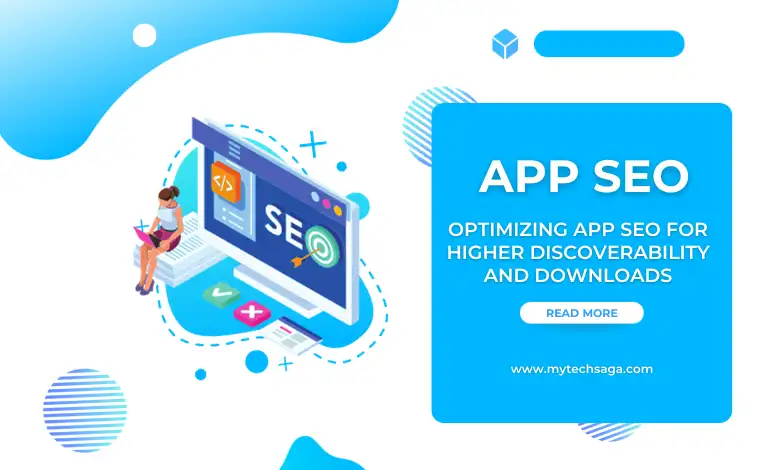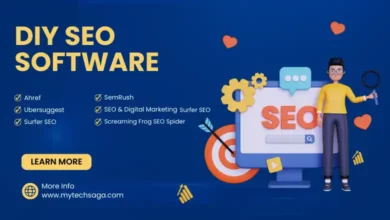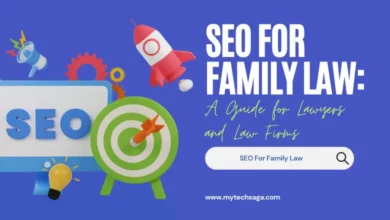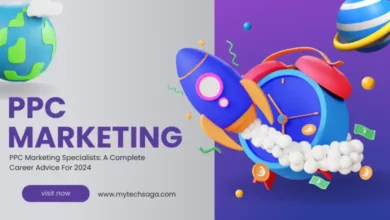Optimizing App SEO: 6 Tips for Higher Reach And Downloads

In today’s crowded app marketplaces, effective app SEO is crucial for standing out and getting discovered by users. With over 5 million apps on Google Play and 2 million on the App Store, getting visibility for your app can be an uphill battle without the proper optimization strategies.
This comprehensive guide will explore key factors to optimize app SEO and promote apps effectively for higher rankings, visibility, and downloads.
Table of Contents
Why App SEO is Important
App SEO involves optimizing an app’s metadata and content so that it ranks higher in app store search results. The higher the app ranks for relevant keywords, the more visible it becomes to prospective users searching for apps offering that functionality. Here are some key reasons why optimizing app SEO should be a priority:
Increased Discoverability
Good app SEO leads to higher rankings in the app store search results. This makes it easier for interested users to find your app when they search for apps related to your offering. Effective SEO can boost your app’s visibility and discoverability among users looking for that particular category of app.
More Downloads and Users
Higher visibility, thanks to SEO, directly translates to increased downloads and more users for your app. Apps on the first page of search results get around 95% of the traffic. If your app ranks high for keywords potential users are searching for, the download rate is likely to be much higher.
Lower User Acquisition Costs
User acquisition through targeted SEO is also far more cost-effective compared to paid ads and other promotion channels. With good rankings, you can get organic downloads at a much lower cost compared to paid user acquisition costs.
Brand Visibility
Good app store optimization reinforces your brand visibility as users see your app appear more frequently for relevant searches. It strengthens recall and awareness for your brand name as well.
Better User Experience
Users expect to see the most relevant apps appear when they search the app stores. Effective SEO ensures your app appears for searches where it is most relevant. It leads to a better user experience as people can easily find your app for their needs.
Important Factors to Optimize App SEO
Optimizing app SEO involves working on on-metadata and on-page content and activity factors. Here are some of the key areas to focus on:
App Title and Description
The app title and description are critical pieces of metadata that influence search rankings. The title should contain your brand name and keywords relevant to the app’s function. The description can elaborate on the app’s purpose and features. Include keywords intelligently without over-stuffing these fields.
App Store Category and Keywords
Categorizing your app properly ensures it shows up in the right sub-categories on the app stores. Research to select apt category tags based on your app’s functionality. Additionally, identify relevant keywords and optimize app metadata and pages with those keywords.
App Content and Quality
The content within your app pages and screenshots matters as well. Higher quality apps with good UI/UX and useful content tend to perform better. Work on improving app speed, navigation, visuals, content quality, and overall user experience.
App Ratings and Reviews
Higher rated apps with more positive reviews tend to rank better in search results. Encourage user feedback and app store ratings/reviews to demonstrate your app’s credibility and quality.
App Updates and Enhancements
Frequently update your app to introduce improvements, fix issues, and add more value for users. Apps that are updated consistently tend to perform better in SEO.
Link Building
Get credible websites to link back to your app’s page on the app store. This helps increase organic visibility and authority for the app’s page.
Localization
Adapt the app for international audiences by translating metadata and app content into multiple languages. It enhances rankings and downloads in those specific geo-locations.
Let’s explore some of these key factors in more depth:
Optimize App Title and Description

The app title and description provide the first impression to prospective users searching the app stores. An optimized title and description can boost click-through rates and conversions. Here are some tips to enhance them:
Include Primary Keyword in Title
Research to identify the main keyword that describes your app’s core offering or function. Include the primary keyword prominently in the app title so it catches user attention.
Keep Title Concise and Descriptive
The app title has a character limit of 30 on App Store and 50 on Google Play. Keep the title short, punchy and descriptive of the app’s purpose. Include your brand name and don’t use repetitive terms.
Highlight Benefits in Description
Elaborate on your app’s purpose, features, and benefits to users in the description. Focus on the value it provides rather than just stating features. Use keywords intelligently.
Use Scannable Formatting
Break the description into short paragraphs with enough white space between them. Use bullet points for key features/highlights. This enhances readability.
Show Social Proof Elements
Highlight positive feedback, user testimonials, media mentions and other social proof elements in the description to establish credibility.
Localize Metadata
Translate the title, description, graphics into local languages to optimize for international markets.
Promoting App on Social Media
Promoting your app on social media channels is an effective tactic to increase visibility and drive organic downloads. Here are some tips for promoting apps on social media:
Create Social Media Graphics
Design appealing social media graphics and banners that highlight your app’s logo, name, benefits, screenshots, etc. These eye-catching creatives will help promote the app visually.
Share Posts Frequently
Consistently share social media posts that educate and update audiences about your app’s features, content updates, tips and how it solves user problems. Share user testimonials.
Use Relevant Hashtags
Leverage trending hashtags related to your app offering to expand reach on social media. Join in hashtag challenges and community conversations.
Run Contests and Giveaways
Run contests like caption contests, hashtag challenges etc. with your app branded creatives. Offer giveaways and free trials to boost engagement.
Promote Events and Launches
Promote special events like new version launch, milestone celebration on social media to create buzz around your app.
Retarget with Paid Ads
Reach out to people who have shown interest but not downloaded your app via paid retargeting ads on social media. Nurture them to convert.
Share User Generated Content
Encourage users to post screenshots and testimonials for your app. Share this user generated content as social proof.
Optimize for App Store SEO
Optimizing your app’s page on the actual app stores is crucial for ranking higher in the search results. Here are tips to optimize for App Store SEO:
Research Competitors and Keywords
Analyze competitors’ app store listings to identify effective keywords and optimization strategies for your niche.
Include Keyword in Title
As discussed earlier, work your primary keyword intelligently into the app title. This signals relevance for that search term.
Write Benefit-Focused Description
Highlight the value proposition, use cases and benefits users get from your app in the description. Align with keywords.
Add Mandatory Information
Ensure you have added all compulsory information like privacy policy, license agreement, etc. incomplete profiles are penalized.
Use High-Quality Graphics
Include good quality app screenshots and videos that give users a clear idea of your app’s UI and experience.
Get Localization and Translation
Localize app content into different languages like Spanish, Chinese, etc. to optimize for international markets on app stores.
Encourage Ratings and Reviews
Prompt users to leave ratings and reviews which build credibility. Respond professionally even to negative feedback.
Optimize App Content and Quality

Merely optimizing an app’s metadata is not enough. The actual content and overall quality of the app plays a key role in organic rankings and user retention. Here are some tips to enhance overall app quality and content:
Improve App Speed and Performance
Optimizing the technical aspects like app size, load speeds, lag, crashes, bugs etc. improves overall user experience which signals higher quality to app stores.
Make App Navigation Intuitive
Ensure in-app navigation and menus are intuitive for users to find what they need easily. Good navigation bumps up content indexing.
Offer Valuable In-App Content
Offer genuinely useful in-app content that solves users’ needs and meets expectations set by the metadata and store listings.
Insert Relevant Keywords
Work relevant keywords into in-app content like help articles, blogs, push notifications and emails in a contextual way.
Create Eye-Catching Graphics
Invest in engaging in-app visuals like photos, illustrations, GIFs etc. that reinforce brand identity and keep users interested.
Update Content Frequently
Refresh app content and messaging regularly through events, blogs, videos, etc. to give users incentive to stay updated with the latest version.
Leverage App Updates
Releasing regular app updates to introduce new features, squash bugs and boost performance gives a signal to app stores that your app is being continuously maintained and improved. Here are some tips for leveraging app updates for SEO:
Fix Bugs and Issues
App updates present an opportunity to fix any existing performance issues, bugs or glitches reported by users. This strengthens app quality.
Introduce New Features
Add value by releasing enhancements and new features that users would find useful. Back these with content and messaging.
Improve Load Speed
Work on optimizations like reducing app size, lighter assets, cleaning junk files, etc. to improve load speed and performance with each update.
Refresh Content
Add some fresh in-app content like articles, videos, quizzes, etc. with each update to keep engagement high.
Highlight Changes in Update Notes
Draft update notes clearly highlighting the changes, fixes, and additions with each new release. Share on social media.
Seek User Feedback
Ask users to update their reviews and provide feedback on the changes introduced with each update. This helps build credibility.
Use AI to Optimize and Promote Apps
AI and machine learning are transforming app SEO and ASO through their ability to crunch vast amounts of data to uncover hidden insights. Here are some ways to leverage AI for app optimization:
Keyword Research
Use AI tools to research highly relevant, long-tail keywords and related terms to expand your targeting and content strategy.
Metadata Optimization
Automated tools can analyze and optimize titles, descriptions, etc. to maximize clickability.
Competitor Analysis
Compare your app SEO performance with competitors and derive insights using AI-powered market research analytics.
A/B Testing
Leverage AI to A/B test different elements like images, descriptions, etc. to figure out what works best.
Predictive Analytics
Conduct forecasts of how well your planned SEO and ASO changes are likely to perform when deployed.
User Analysis
Gain insights into user behavior on your app using AI tools to customize engagement and conversion tactics.
Automated Reporting
Get automated reports that track rankings, metadata performance, reviews, ratings, etc. to monitor SEO KPIs.
Frequently Asked Questions
How can I check my app's current SEO performance?
Use App Store optimization tools like App Annie, Sensor Tower, etc., that provide intelligence on your app's keywords rankings, organic downloads, reviews, and other SEO metrics.
Does ASO apply only for new apps or existing apps as well?
ASO is crucial for both new apps seeking initial visibility as well as existing apps looking to improve discovery and organic promotion.
How often should I update my app?
Ideally, apps should be updated every 2-4 weeks to introduce optimizations, fix issues, and add fresh content. Frequent updates signal that your app is active.
Should I focus on global or local app store optimization?
Work on optimizing for both - target relevant local keywords and translations for different countries in addition to global SEO.
What type of links should I try to acquire to improve rankings?
Focus on getting links from industry websites, app review sites, forums, and interactive content linking to your app store page.
Conclusion
In the competitive app landscape, optimizing SEO and ASO is imperative for better store visibility and organic downloads. Work on crafting engaging metadata, promote socially, focus on overall quality, acquire credible links, and leverage AI for deeper optimization.
App SEO requires ongoing efforts rather than a one-time fix. However, the long-term payoffs in the form of increased organic users make it a worthwhile investment. Use this guide’s strategies and best practices to boost your app’s discoverability and user acquisition.




